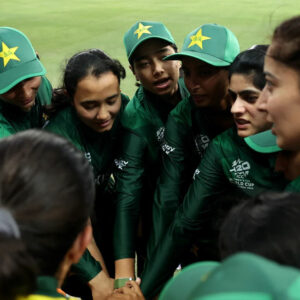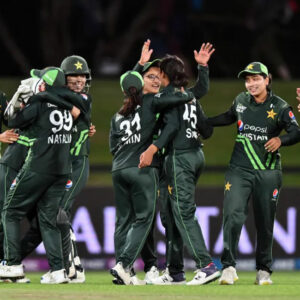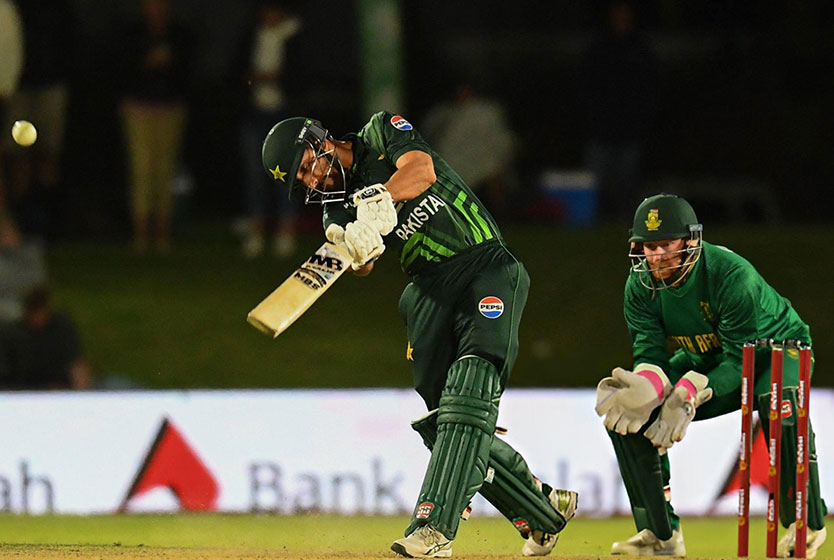
Pakistan Women’s Cricket: Review of the ICC ODI Championship Cycle 2022/23-2025
The Pakistan Women’s cricket team experienced a debacle during the ICC ODI Championship cycle for 2022/23-2025. Overall, their performance was disappointing, and their results at home were particularly subpar.
The Pakistan team played 24 matches in the ODI Championship cycle, starting in June 2022, with a home series against Sri Lanka. During this period, the team also underwent a leadership change: Bismah Maroof stepped down as captain in March 2023 following the Women’s T20I World Cup, and Nida Dar took over the captaincy of the white-ball teams.
Out of 24 matches, the Green Shirts managed to win only 8, losing 15, with 1 no-result. Currently ranked 7th on the points table, they now face the challenge of playing in the qualification round for the ODI World Cup 2025 next year in India. During this championship cycle, Pakistan played 12 home matches, winning 6, and 12 away matches, where they secured just 2 victories—one each against Bangladesh and New Zealand.
The win/loss ratio of 0.53 highlights the Green Shirts’ struggle for consistency, especially against top-tier opponents. The team managed to win only 4 out of 15 matches against the top 6 sides.
ODI Championship Cycle Summary
Pakistan’s first series of the 2022/23-2025 championship cycle was a home series against Sri Lanka, which they won 2-1 under the captaincy of Bismah Maroof. They then hosted Ireland and secured a 3-0 series victory. After these two successful home series, Pakistan traveled to Australia for a three-match series at the start of 2023, where they were whitewashed by the mighty Australian side. This series marked the end of Bismah Maroof’s captaincy in ODIs. During this cycle, Pakistan played a total of 9 matches under her leadership, winning 5 and losing 4.
After Bismah Maroof’s resignation, Nida Dar was appointed captain of Pakistan. Her first series as captain was against South Africa at home in September 2023, which Pakistan lost by a 2-1 margin. Pakistan’s next two series were away against Bangladesh and New Zealand, both of which the Green Shirts lost by the same 2-1 margin. Despite these setbacks, Pakistan achieved a historic feat during the series against the White Ferns, winning the third ODI in a super over. However, this victory did not come under Nida Dar’s captaincy, as she got injured during the first ODI, and Fatima Sana led the team for the remaining two ODIs.
In 2024, Pakistan played two series, suffering a whitewash at home against the West Indies and losing 2-0 to England, with one match ending in a no-result during the away series. Under Nida Dar’s leadership, Pakistan played 13 matches, winning only 2 and losing 10. With a win/loss ratio of just 0.2, Nida Dar’s leadership skills are under serious scrutiny ahead of the World Cup qualification round. It is highly likely that she will not be retained as captain for the ODI format. Fatima Sana, who led the team to a historic victory in the third ODI against New Zealand, has emerged as a strong candidate for the captaincy.
In-Depth Analysis
Batting
In batting, Sidra Amin emerged as Pakistan’s standout performer throughout the championship cycle, amassing 967 runs at an average of 48.35 and a strike rate of 75.54. She is currently ranked third on the list of highest run-scorers for the ICC ODI Championship cycle 2022/23-2025. The second-highest run-scorer for Pakistan was Bismah Maroof, with 576 runs, followed by Muneeba Ali with 516 runs. Sidra Amin and Fatima Sana were the only two Pakistani batters to score at a strike rate above 70 with a minimum of 300 runs. Fatima Sana scored 305 runs at an average of 25.41 and a strike rate of 74.39.
In the batting Powerplay, Pakistan’s top batter, Sidra Amin, accumulated 335 runs with a strike rate of 64. This strike rate suggests that Pakistan’s average Powerplay score would be around 38-39 runs. Muneeba Ali, the second-highest run-scorer for Pakistan in the Powerplay, contributed 202 runs at a strike rate of 57.5.
During the ICC ODI Women’s Championship cycle, Pakistan’s batters primarily struggled in the middle overs to maintain momentum and scoring rates. In overs 11-40, Sidra Amin led the way for Pakistan, accumulating 522 runs at a strike rate of 79.09. In contrast, the middle overs saw a more significant contribution from batters of other teams: South Africa had 7, New Zealand 4, England 7, and Australia 6 batters with a strike rate above 70 during the same phase, while Pakistan had only one.
In overs 41-50, Sidra Amin once again led for Pakistan, scoring 110 runs. However, Fatima Sana was the only Pakistani cricketer to achieve a strike rate above 100 in the death overs with a minimum of 70 runs. Fatima Sana also ranks among the top 15 players in the ODI championship cycle 2022/23-2025, with a strike rate exceeding 120 in the final ten overs.
The batting was heavily dependent on three players: Sidra, Muneeba, and Bismah. Pakistan’s batting struggled whenever these three failed to put on a collective show. Out of 23 matches, Pakistan’s batting was unable to play 50 overs 10 times, 8 times they batted the full quota of overs, and 5 times the chase finished before 50 overs.
Bowling
In bowling, Nashra Sandhu has been Pakistan’s standout performer, claiming 25 wickets in 17 innings at an average of 30.28 and an economy rate of 4.67. She is followed by captain Nida Dar and right-arm pacer Fatima Sana, who took 24 and 23 wickets, respectively. Right-arm leg-break bowler Ghulam Fatima and left-arm orthodox bowler Saadia Iqbal also made significant contributions, with 19 and 16 wickets, respectively, in the ICC ODI World Championship cycle 2022/23-2025.
In the Powerplay, Sadia Iqbal and Fatima Sana emerged as Pakistan’s most effective bowlers. Diana Baig was economical but struggled to take wickets. Sadia took 7 wickets at an impressive economy rate of 2.58, delivering around 45 overs during the ODI Championship cycle. Fatima Sana also claimed 7 wickets in the Powerplay.
In overs 11-40, Pakistan’s four spinners performed admirably during the ODI Championship. Umm-e-Hani took 12 wickets, Nashra Sandhu 10, Nida Dar 13, and Ghulam Fatima led with 13 wickets. Notably, Nashra Sandhu recorded the best economy rate during this phase, maintaining a tight 4.18.
In overs 41-50, Sadia Iqbal recorded the best economy rate at 3.69, taking 12 wickets. Ghulam Fatima claimed 3 wickets, while Nida Dar secured 8 wickets in this ODI Championship cycle (2022/23-2025).
Captaincy
The current captain has led Pakistan in 13 matches during this Championship cycle, managing just 2 wins, with 10 losses and 1 no-result. When Bismah Maroof stepped down as captain, there was widespread expectation that the PCB would appoint a young leader to be groomed under the guidance of senior players like Bismah Maroof and Nida Dar. However, the PCB chose Nida Dar to take the helm. Nida’s captaincy tenure started promisingly with a T20I series win against South Africa in Karachi last September, but her ODI leadership has struggled from the outset. Pakistan first lost the home series against South Africa, followed by an away series defeat against Bangladesh. On the New Zealand tour, Pakistan managed a single ODI win, but that victory came under Fatima Sana’s leadership in Nida’s absence.
At 37 years old, Nida Dar, a veteran all-rounder, is grappling with challenges related to fitness, batting form, and the team’s recent whitewash against the West Indies and a 2-0 series loss to England. These have placed her captaincy under significant pressure. Whether she will retain the captaincy until next year’s ODI World Cup remains uncertain.
The PCB’s missed opportunity to groom a young captain, like Fatima Sana, under the mentorship of senior players may have long-term consequences for Pakistan. The absence of a succession plan could become evident as these senior players gradually exit the stage.
Young Talent
During the ICC Championship cycle 2022/23-2025, four young players—Tuba Hasan, Najiha Alvi, Sadaf Shamas, and Umm-e-Hani—were awarded the green caps. Of these, three made their debuts under Bismah Maroof, while Najiha Alvi debuted under Nida Dar during the Bangladesh tour last year. Among them, Sadaf Shamas featured in the most matches, playing 15 games, followed by Umm-e-Hani with 14, Najiha Alvi with 12, and Tuba, who only had the opportunity to play in 4 games.
Umm-e-Hani emerged as a key player for Pakistan in the middle overs (11-40), becoming the 3rd highest wicket-taker for the team during this phase. On the other hand, Sadaf Shamas and Najiha Alvi both averaged just over 20 in the innings they batted, yet have not delivered any impactful performances at the ODI level. Tuba Hasan, who has been primarily focused on by the management as a T20I all-rounder, managed to take only 2 wickets in the 4 innings she bowled.
Road Ahead
The road ahead for the Pakistan Women’s cricket team demands a focus on rebuilding and strategic improvement. Leadership is under scrutiny, with Nida Dar’s captaincy in question and the need for grooming a younger leader like Fatima Sana. Batting consistency, especially in the middle and death overs, must be addressed, along with enhancing the bowling attack to be more aggressive in key phases. Integrating young talent effectively and improving fitness and fielding standards are critical steps. The PCB’s support in providing robust training, infrastructure, and international exposure will be vital as the team prepares for the World Cup qualifiers.
The opinions expressed solely belong to the writer and do not necessarily reflect the views of Grassroots Cricket.













Leave a Reply